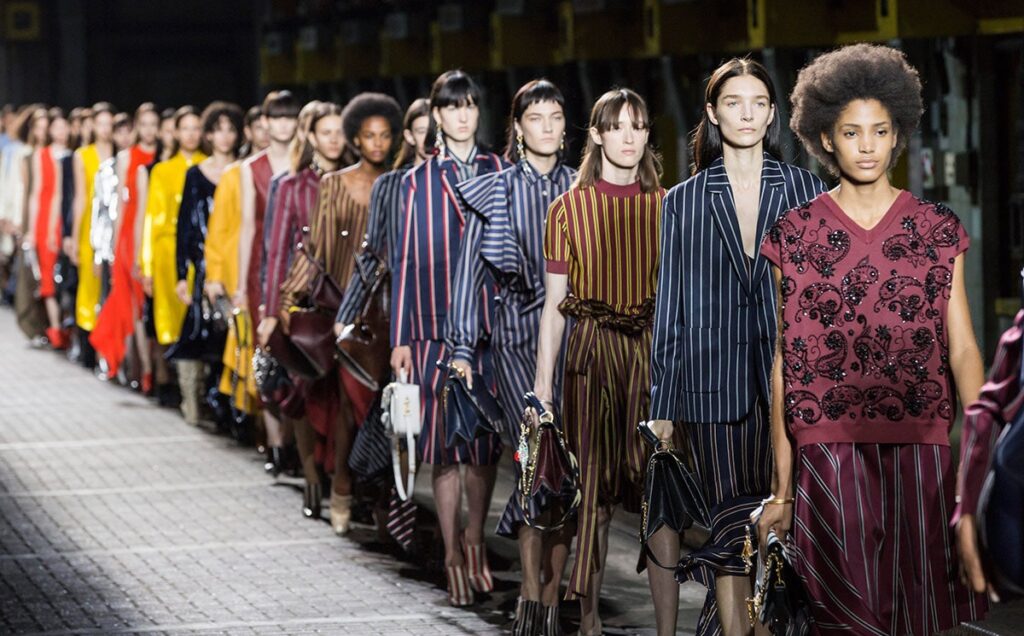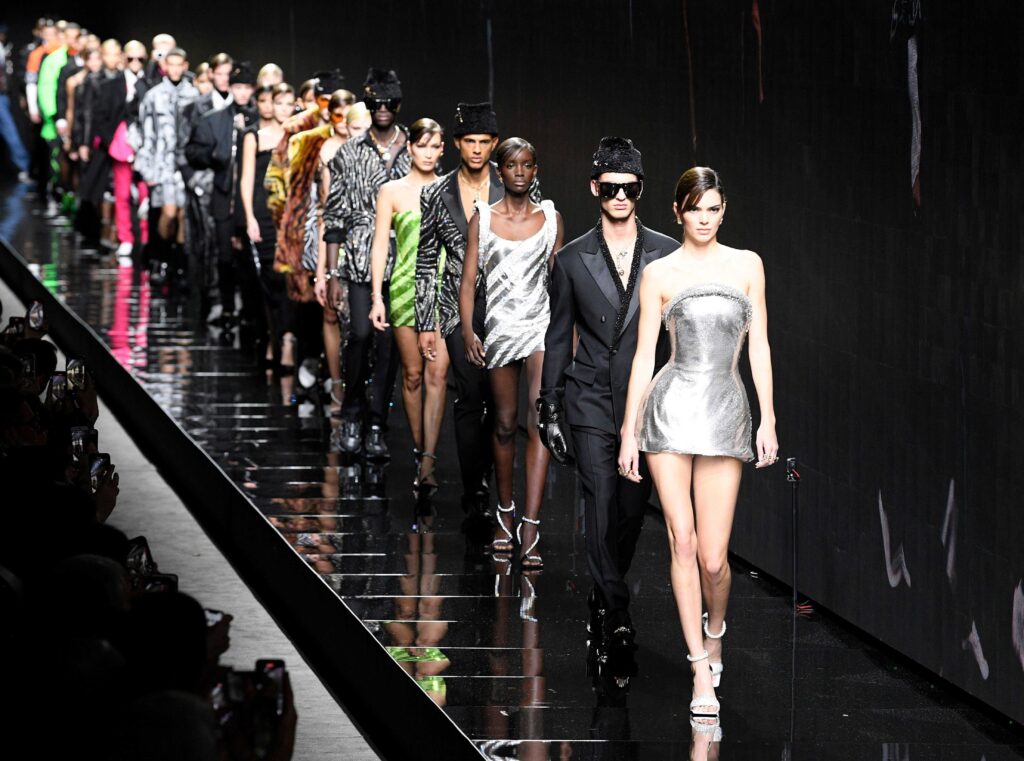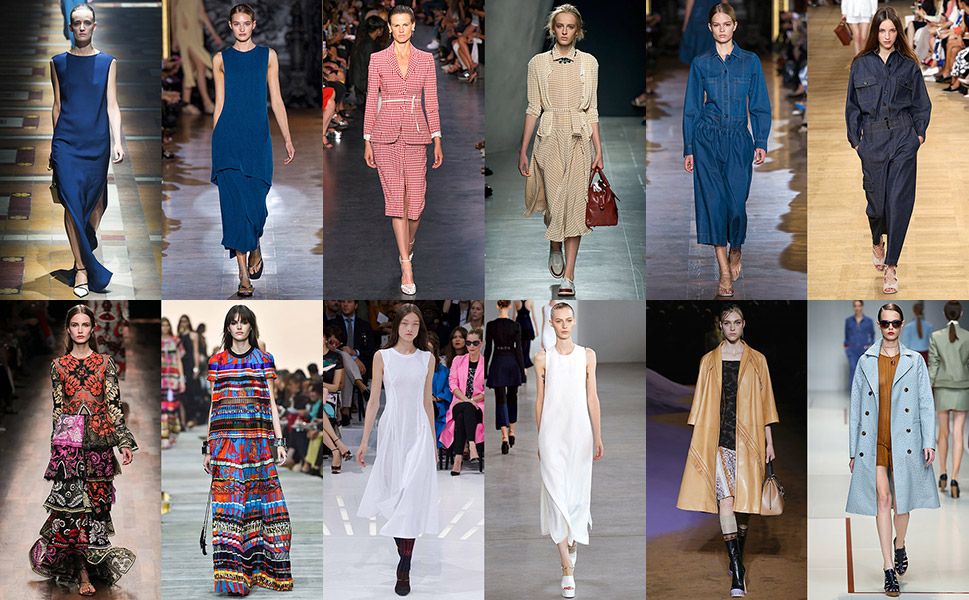Fashion is not just a form of expression; it is a language that speaks volumes about our culture, society, and individual identity. The fashion industry, with its ever-evolving trends and constant innovations, plays a crucial role in shaping consumer behavior and reflecting societal changes. Staying updated with the latest fashion news and trends is essential for fashion enthusiasts, industry professionals, and consumers alike. This article explores the latest updates in fashion, including new collections from top designers, major fashion shows, models in the spotlight, and comprehensive style guides. Understanding these aspects is key to navigating the dynamic world of fashion, influencing personal style, and making informed fashion choices.
Latest Fashion Trends
Fashion trends are cyclical, with each season bringing a fresh wave of inspiration and innovation. For spring/summer, key trends include a resurgence of pastels, floral prints, and lightweight, breathable fabrics like linen and cotton. These elements evoke a sense of freedom and ease, perfectly suited for warmer weather. Designers like Alexander McQueen, for instance, showcased collections filled with soft hues and floral motifs, while brands like Prada and Valentino embraced pastel palettes in their ready-to-wear lines. These trends not only captivate through their aesthetics but also reflect the desire for sustainability, with an increased focus on organic and biodegradable materials. As the fashion industry grapples with environmental concerns, these lighter, eco-friendly fabrics are becoming a staple in the seasonal collections.

In contrast, the fall/winter trends see a dramatic shift towards darker, richer hues, heavy textures, and statement outerwear. Collections from designers such as Balenciaga, Chanel, and Burberry featured bold, jewel-toned palettes, velvets, and metallics, capturing the opulence of the colder months. Oversized coats, tailored trousers, and layering were key themes, creating a luxurious yet practical wardrobe. These trends are not only visually striking but also practical, offering versatility and warmth in the face of seasonal changes. The juxtaposition of light and dark, old and new, highlights the season’s dichotomy and continues to influence consumer purchases as they build their fall and winter wardrobes.
Cultural events, such as the ongoing Black Lives Matter movement, have also influenced fashion. Designers are increasingly prioritizing diversity and inclusivity, creating collections that represent a broader range of identities. Brands like Gucci, Prada, and Valentino have introduced more diverse models in their campaigns, reflecting a commitment to showcasing the multifaceted nature of beauty and fashion. The integration of cultural elements such as African prints, indigenous designs, and streetwear-inspired graphics also plays a significant role. These cultural influences not only drive trends but also challenge the industry to rethink its values and practices, pushing it towards a more inclusive and socially responsible future.
Sustainability has emerged as a central theme in fashion trends. Consumers are demanding more environmentally friendly options, leading designers to explore sustainable practices. Sustainable fashion is not just a trend; it’s a movement. Designers like Stella McCartney, known for her ethical practices, and innovative brands such as Reformation, are leading the charge with collections that prioritize eco-consciousness. Their use of organic cotton, cruelty-free materials, and upcycling techniques highlights the industry’s shift towards sustainability. The acceptance of vintage and second-hand fashion has also gained momentum, with platforms like Depop and ThredUp gaining popularity. This movement reflects a larger cultural shift towards mindful consumption and a rejection of fast fashion, with consumers valuing quality and longevity over quantity.
Top Designers and Fashion Shows
Fashion weeks in New York, Paris, Milan, and London are the epicenters of creativity, where designers unveil their latest collections, setting the tone for the upcoming seasons. New York Fashion Week showcases American designers like Marc Jacobs, Ralph Lauren, and Proenza Schouler, who presented collections characterized by bold colors, tailored silhouettes, and an emphasis on everyday wear. Marc Jacobs, for instance, offered a mix of vintage-inspired looks with contemporary twists, highlighting the blurred lines between high fashion and streetwear. His use of graphic prints, oversized jackets, and vibrant accessories captured the essence of American fashion.

Paris Fashion Week remains a symbol of luxury and high fashion, with major houses like Chanel, Dior, and Louis Vuitton showcasing collections that blend traditional craftsmanship with modern innovation. Chanel’s autumn/winter show was a masterclass in opulence, featuring tweed suits, structured coats, and intricate embellishments that pay homage to the brand’s heritage. Dior’s collection, on the other hand, was a tribute to femininity, with delicate lace, floral appliqués, and soft silhouettes. These shows not only display the designers’ creative visions but also serve as platforms for exploring societal issues, such as gender fluidity and sustainable fashion.
Milan Fashion Week is known for its contributions to the high-fashion landscape, with designers like Gucci, Prada, and Versace presenting collections that blend heritage with bold, modern statements. Gucci’s runway featured eclectic patterns, oversized silhouettes, and a mix of vintage and futuristic elements, emphasizing a freedom of expression. Prada’s show, with its minimalistic approach and playful layering, captured the essence of contemporary Italian fashion. Versace’s collection, with its glam-rock influences and metallic finishes, embodied the brand’s glamorous ethos. These shows highlight the cultural and creative diversity within Italian fashion, appealing to a global audience.
London Fashion Week has seen a resurgence in creativity with emerging designers and avant-garde fashion statements. Designers like Vivienne Westwood and Simone Rocha brought their unique perspectives to the stage. Westwood’s show combined punk influences with sophisticated tailoring, embodying her iconic rebellious spirit. Simone Rocha’s collection was a blend of ethereal gowns and tough, utilitarian elements, showcasing the versatility of British fashion. This juxtaposition of styles reflects London’s reputation as a hub for creative experimentation, setting trends rather than following them.
The Role of Models in Fashion
Models are the faces of fashion, representing brands and influencing trends. The industry’s top models, such as Gigi Hadid, Kendall Jenner, and Adut Akech, have become more than just runway stars; they are cultural icons in their own right. Gigi Hadid, known for her versatility and relatable persona, has graced numerous high-fashion runways and covers, embodying the essence of modern femininity. Kendall Jenner, with her chiseled features and effortless style, has become the face of major fashion brands like Calvin Klein and Prada. Adut Akech, a South Sudanese-Australian model, has emerged as a powerful advocate for diversity and body positivity, using her platform to challenge beauty standards and promote inclusivity.
These models represent a shift in the industry’s criteria for beauty, moving away from the traditional, ultra-thin models of the past to a more inclusive and diverse range of body types, ethnicities, and ages. The rise of models like Winnie Harlow, who has vitiligo, and Precious Lee, the first plus-size model to sign with a major agency, highlights this movement towards representation. The fashion industry is slowly embracing diversity, not only for ethical reasons but also because it reflects the evolving consumer demographic.

Modeling agencies play a crucial role in shaping model careers. Agencies like IMG, Elite, and Wilhelmina manage the careers of top models, guiding their transitions from runway to editorial work and beyond. These agencies provide the support and resources needed for models to build successful, long-term careers. The criteria for becoming a top model today have evolved; it’s no longer just about physical appearance. Personal branding, social media presence, and advocacy work are equally important. Agencies are now looking for models who can represent brands authentically, engage with audiences on social platforms, and contribute to cultural conversations.
Style Guides and Fashion Advice
Practical advice on how to translate runway trends into everyday wear. Tips on accessorizing, mixing prints, and layering to achieve a high-fashion look. For instance, pairing a minimalist black dress with statement jewelry or layering a chic leather jacket over a graphic tee can instantly elevate a casual outfit. These styling tips help consumers adopt trends in a way that fits their personal style, making high fashion more accessible. Consumers are increasingly looking for ways to integrate pieces from the runway into their daily wardrobes, and these tips serve as a guide to achieving that.
Building a versatile wardrobe with key pieces for each season is another critical aspect of fashion advice. Essentials like tailored blazers, classic denim, and versatile footwear are must-haves for creating a functional wardrobe. For spring, lightweight jackets and flowy dresses are ideal, while fall calls for layering pieces like chunky sweaters and statement boots. Knowing how to mix and match these pieces allows individuals to maximize their wardrobe without constantly needing to shop for new items. This guide to essentials not only simplifies fashion choices but also reduces waste, aligning with the sustainable fashion movement.
Strategies for finding high-quality fashion on a budget are invaluable for many. Thrift shopping, sales, and understanding the quality of fabrics are essential skills for dressing well without spending a fortune. Brands like Zara and H&M offer trendy, affordable options, while second-hand stores provide unique pieces at a fraction of the price. Mixing high-end fashion with budget finds can result in a more personalized and stylish wardrobe. Shopping smartly, investing in classic pieces, and experimenting with fashion at a lower cost are practical ways to stay fashionable without breaking the bank.
Digital Impact on Fashion
The growth of online fashion platforms and how they are reshaping retail. The convenience of online shopping, its impact on traditional stores, and how brands are adapting. E-commerce giants like Amazon and fashion-specific platforms such as ASOS have made fashion more accessible. The shift towards online shopping has accelerated due to the pandemic, forcing many physical stores to embrace digital sales channels. This transformation allows consumers to shop from the comfort of their homes, browse global fashion selections, and even purchase from international brands without the hassle of overseas shipping. Online platforms also provide valuable data insights into consumer preferences, enabling brands to tailor their marketing strategies more effectively.
